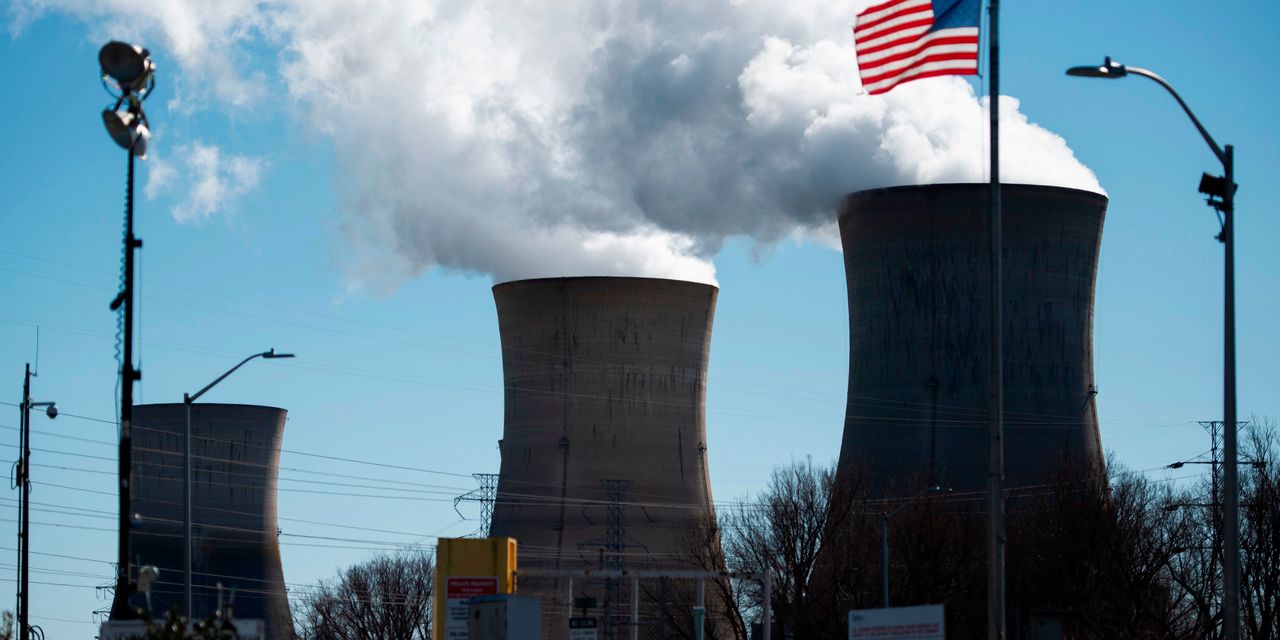Uranium prices have reached their highest level in more than a decade as a global supply shortage persists, with the bull market for uranium investments still in its “earliest days.”
The market is “definitely in a structural deficit as demand is growing at a 5% annual rate and the current (2023) gap between global production and consumption remains at over 50 million pounds,” Scott Melbye, executive vice president at mining company Uranium Energy Corp.
UEC,
told MarketWatch.
Weekly spot uranium prices stood at $72.75 a pound as of Oct. 2, the highest since February 2011, according to data from nuclear-fuel consulting firm UxC, and were last at $69 as of Oct. 9. Weekly prices have climbed nearly 45% since the end of last year.
Weekly prices for uranium have climbed around 45% year to date, data from UxC show.
UxC
In late August, Jonathan Hinze, president at UxC, told MarketWatch that the market was seeing the “best set up for nuclear power expansion” that he’d ever seen. That observation still holds, he said.
It is clear that the uranium supply/demand balance remains “extremely tight, and it will likely only get tighter” in the coming 12 to 24 months as demand continues to rise, “while new supplies are taking more time to materialize, and inventories keep getting drawn down,” he said.
Read: Uranium prices are still ‘nowhere near the peak of the last cycle’: Here’s why nuclear energy ETFs could power your portfolio
Since late August, financial players, including hedge and publicly traded funds active in uranium, have been quite active buying additional uranium off the spot market, said Hinze. These funds “clearly believe that prices are set to rise further, and investors are therefore adding money to their coffers to allow them to buy physical uranium.”
This is demand that isn’t fully anticipated in the market and this has added to the overall positive demand picture, he said.
Price pullback
Still, Melbye pointed out that uranium prices have pulled back a bit more recently as some traders took some “very handsome profits on their accumulated long positions.”
That pullback may have also come as an “overreaction,” he said, to news from Kazakhstan, which produced the world’s largest share of uranium from mines in 2022, according to the World Nuclear Association. Kazatomprom, Kazakhstan’s national operator for the export and import of uranium, announced in late September a return to full production in 2025 to meet global nuclear energy demand.
Melbye believes there was an overreaction in uranium prices because “this will ultimately have little impact on Western supply and demand as most analysts had them producing close to those levels by that time in their forecasts.”
Even with that production assumption, the market is “still dramatically undersupplied,” and based on Melbye’s estimation, requires eight to 10 new mines starting up globally by 2030, he said.
And while uranium has been among the best performing commodities year to date, it has only recently reached the level which “incentivizes the world’s best mines,” he said.
This bull market in uranium investments is “still in its earliest days,” said Melbye.
Among the exchange-traded funds, the Global X Uranium ETF
URA
has gained more than 25% on the year through Friday afternoon, while the Sprott Uranium Miners ETF
URNM
has added almost 36%. The Sprott Physical Uranium Trust
SRUUF,
a closed-end fund, trades nearly 39% higher.
Broader new mine developments with significant capital investments in an inflationary environment require higher prices to move ahead, Melbye said. “Even at those levels, the long lead times needed to achieve these necessary start ups could leave the market in a short squeeze for several years.”
The recent spot market move lower in prices marks a “temporary pause, and not a peak,” he said. “Buyers should be active on this welcome dip.”
Supply ‘challenges’
Contributing to supply concerns, a July coup has disrupted mining operations in the country of Niger in West Africa. Niger produced just over 4% of the world’s uranium in 2022, according to World Nuclear News.
The coup caused borders to close, and major uranium mine and mill operation called Somair has been halted, said UxC’s Hinze. The mine, operated by the French company Orano, sells most of uranium to customers in Europe, he said.
Meanwhile, Cameco Corp.
CCJ,
one of the world’s largest providers of uranium, said it’s encountered challenges at its mine and milling operation in Canada. The company now expects to produce nearly 3 million pounds of uranium concentrate less this year than previously anticipated, said Hinze.
“These production challenges add to the overall view that the supply/demand balance is very tight and will get even tighter,” he said.
Read the full article here










